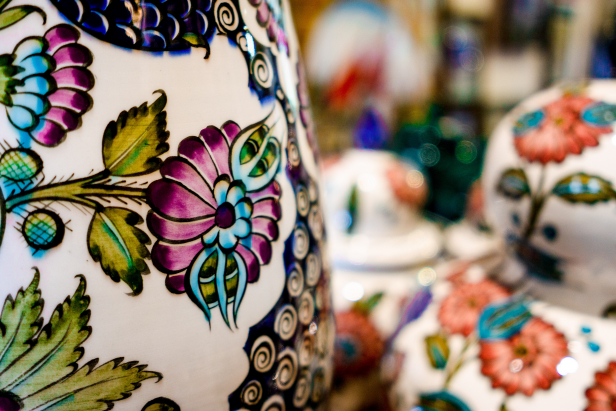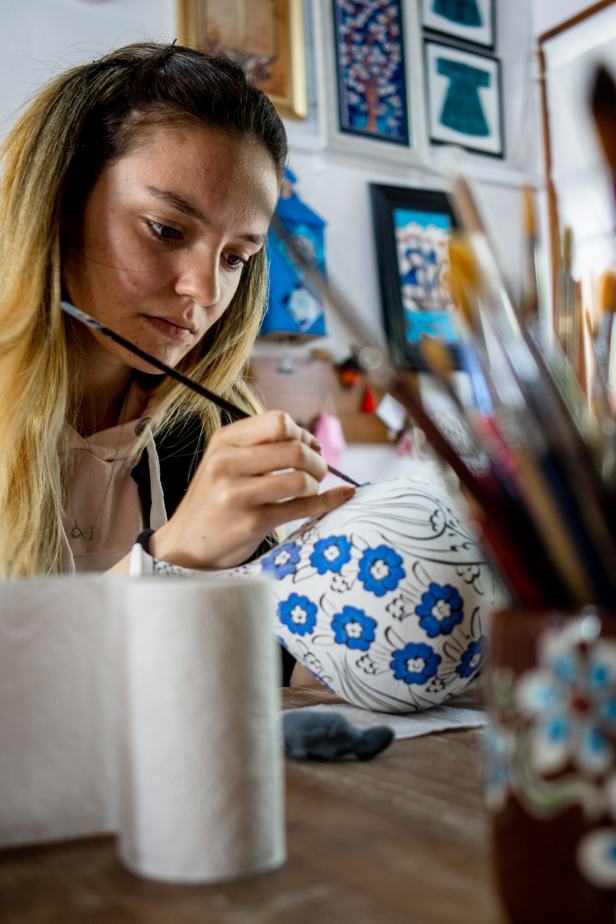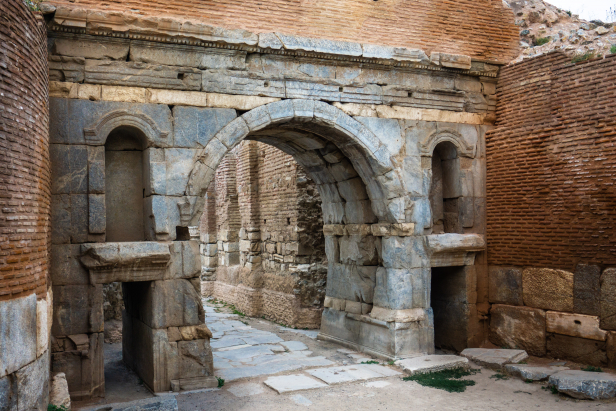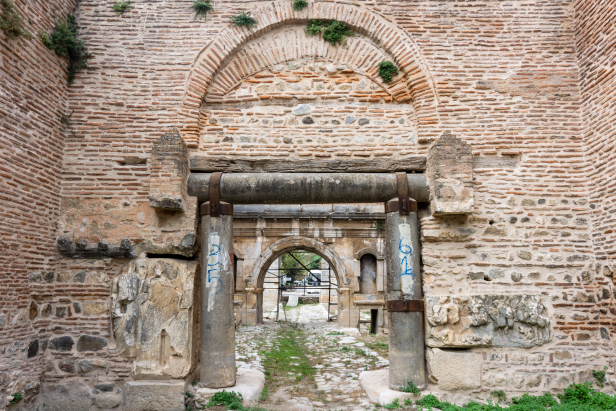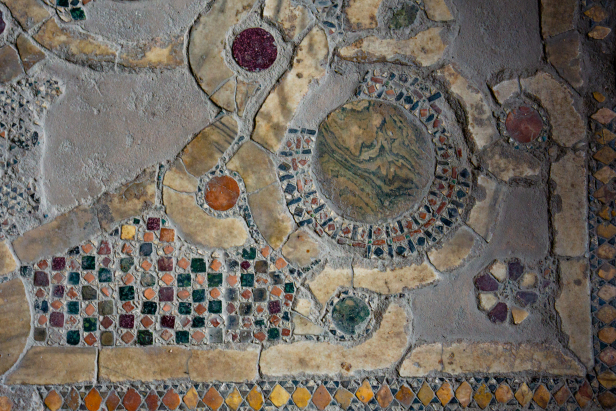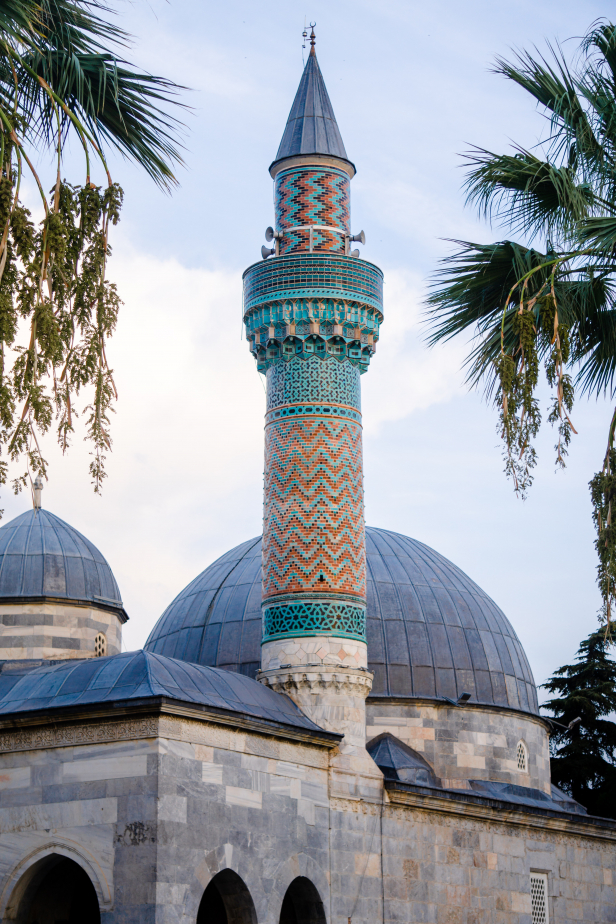The Town of İznik (Nicaea)
İznik
/ By Josh
Cost: Free
Great for: Roman History, Byzantine History, Ottoman Art, İznik Tiles, Pottery, Olive Orchards
Set in a quiet valley far away from bustling cities and busy highways, İznik is a blend of dusty agricultural town and artist’s haven set amidst the ruins of a great and wealthy city. Surrounded by low hills covered in olive orchards and flanked by the 32 kilometre long İznik Lake, the town of İznik is a beautiful rural retreat from city life with a number of fascinating sights to see. Visit the site of the first Church council where much of the tone of Christianity was set, explore the crumbling walls of the Roman city, or pop into an artist’s workshop and see the Ottoman tradition of ceramic painting living on through the centuries in the hands of a new generation of artisans.
The History of Nicaea/İznik
While İznik may feel almost remote today, bypassed by any major roads and far from any other large towns or cities, İznik was once a dominant city of culture and power at the crossroads of ancient highways, the remains of which still can be spotted among the green hills of Bursa.
İznik was established as a city around 1000 BC, and took on the name Nicaea in 301 BC after one of Alexander the Great’s generals captured it and named it for his wife who had died shortly before. During the Roman period and on into the Byzantine, Nicaea was a far more important city than nearby Bursa, and predates Constantinople (Istanbul) by well over 1000 years. However, its not until 325 AD that it really becomes an important place in history.
Subscribe to The Art of Wayfaring
Christianity had been restricted and considered illegal within the Roman Empire until 313 when emperor Constantine the Great issued the Edict of Milan. Constantine himself would go on to profess christianity and, as Emperor over an increasingly christian empire, he sponsored a council of Church leaders to come together and seek consensus on various issues.
Stories and legends concerning the First Council of Nicaea have sprung up over the centuries (in great part due to Jerome, Voltaire, and Dan Brown). Most of which centre on the idea that it was here that the four gospels were chosen and all others destroyed. Some stories tell of a table covered in various versions being shaken until only four remained and these were chosen to be used.
In reality canonization wasn’t a topic of discussion at this council, and instead it was a room full of bishops discussing topics such as when to celebrate Easter, the nature of Christ’s divinity, and how to stop monks from castrating themselves.
Sadly the exact location of this council has been lost entirely.
By the time of the first crusade, Nicaea had fallen to the Seljuk Turks. The Byzantines along with the help of the Crusaders managed to retake the city in part by dragging ships into the lake over land and attacking from the water (a few centuries late the Ottomans would use the same tactic against the Byzantines at Constantinople).
During the Fourth Crusade, Byzantine – Crusader relations had changed rather dramatically. The European army, instead of helping the Byzantines, captured their capitol of Constantinople and looted it in 1204 (you can still see Byzantine treasure on display in Venice). Many Byzantine nobles took refuge in Nicaea.
In 1331 Nicaea fell to the Ottomans, though, unlike Bursa it never grew into a particularly important city. In fact Nicaea, referred to as İznik by the new Turkish rulers, would never even come to completly fill the space inside the ancient walls. Visitors from shortly after the conquest to centuries later would describe it as a forlorn village in the midst of a ruin.
In the 16th and 17th centuries İznik again became important, this time as the center of the Ottoman tile industry. An industry that would fill mosques and palaces all over the empire with bold blues and reds and magnificent flowing designs. The Blue Mosque (Sultan Ahmet) Mosque owes much of its fame to the blue tiles that were produced here.
Over the centuries ceramic production moved out to another city (Kütahya) and İznik was again left forlorn apart from a small collection of artists and potters that kept the tradition alive in the place of its birth.
Why Visit?
Ceramics
While you can find the artwork of İznik’s ceramic potters and painters all over Turkey, visiting İznik is a great opportunity to see these craftsmen at work. There are numerous workshops and galleries scattered throughout the center of town, some housed in historic buildings like the market in the Süleyman Paşa Madrasah. You’ll be able to see experts practicing their craft, some continuing faithfully to traditional forms and motifs while others blend tradition with new and modern styles.

The City Gates and Walls
While the main attraction to İznik is the traditional ceramics shops, the ancient city creates an almost mystical backdrop. It isn’t possible to go far in İznik without seeing a portion of wall fill the end of an alley, or the squared stones of a tower looming over a house.
The walls go all the way around the city both on the landside as well as along the lake shore making for nearly five kilometers of fortifications. Much of the wall is actually a double wall consisting of the main wall with its towers and a shorter outer wall about 10 meters away. In total there were some 114 towers built in various shapes and sizes.
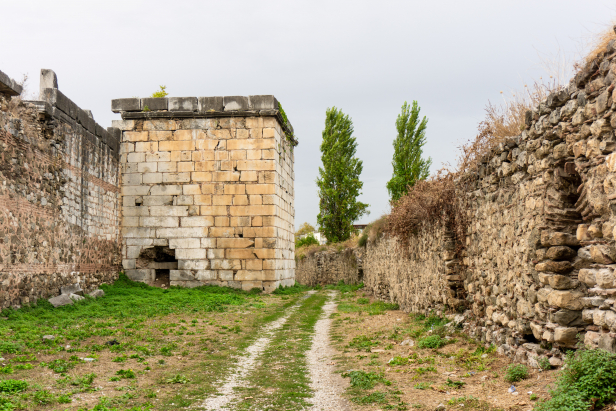

While the sheer size of these walls is certainly impressive, the most interesting part of the old city fortifications are the magnificent city gates. Historically there were four main gates as well as a handful of other lesser gates. Lefke Gate (Lefke Kapısı) was originally built as a triumphal arch by Emperor Hadrian and still displays the beauty and craftsmanship of this era. Istanbul Gate is also quite interesting, not as much for its beauty as much as for how it shows increasing need for strength. Here you can see signs of many changes and additions to the walls and gates with stones and pillars repurposed to build-up the outer wall.
Despite the efforts of their builders and defender, the walls of İznik seem to have failed rather frequently. The history of Nicaea and İznik is a long list of people who conquered and took control of the city, from Alexander the Great’s general in 301 BC, to the Seljuks, Crusaders, Ottomans, and Tamerlane. The medieval period in particular was a troubled time for this region and this city.
In an effort to stop the alarming decay of these magnificent walls a great amount of effort has been put into restoration. Unfortunately the work has, at times, been quite haphazard and the historicity of many sections is being lost.
Hagia Sophia Church/Orhan Gazi Mosque
Originally built in the 6th century during the reign of Justinian the Great (builder Istanbul’s Hagia Sofia Church turned mosque) at the crossroads of ancient Nicaea’s four main roads, the church suffered damage during the 1065 earthquake. Subsequent fires and restorations have changed the appearance of this ancient church turned mosque. From the exterior you can still see the fine masonry and massive blocks that make up the lower sections of the walls. Above is a blend of brick and stonework from various ages. The great Ottoman Architect Mimar Sinan presided over the restoration in the 16th century. The current roof was only added within the last decade with the aim of preserving the building rather than reflecting the original style.
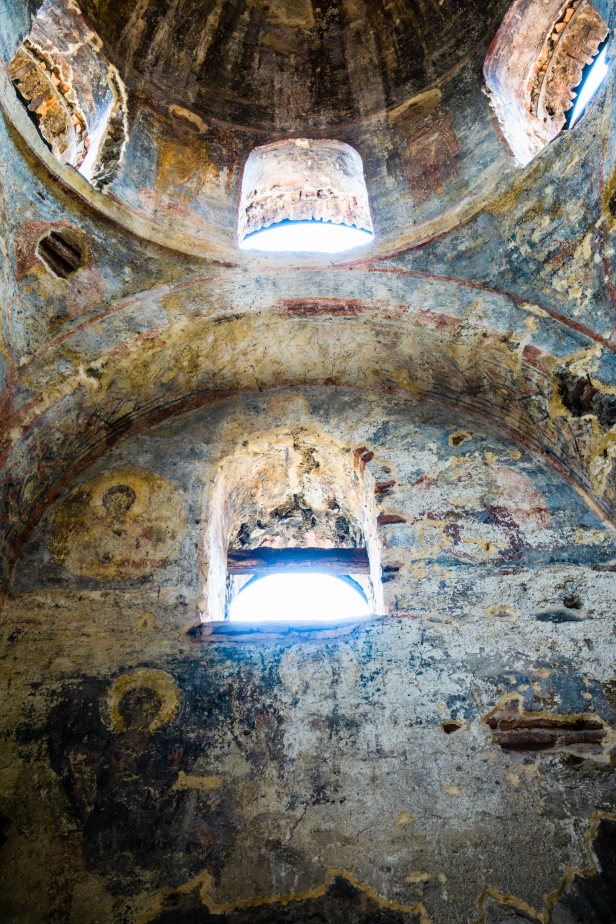
While this church was not the location of the first Ecumenical Council, it was the location of the seventh council. Strangely, the Christian history of this building gets only a half sentence in history explained on the signs outside.
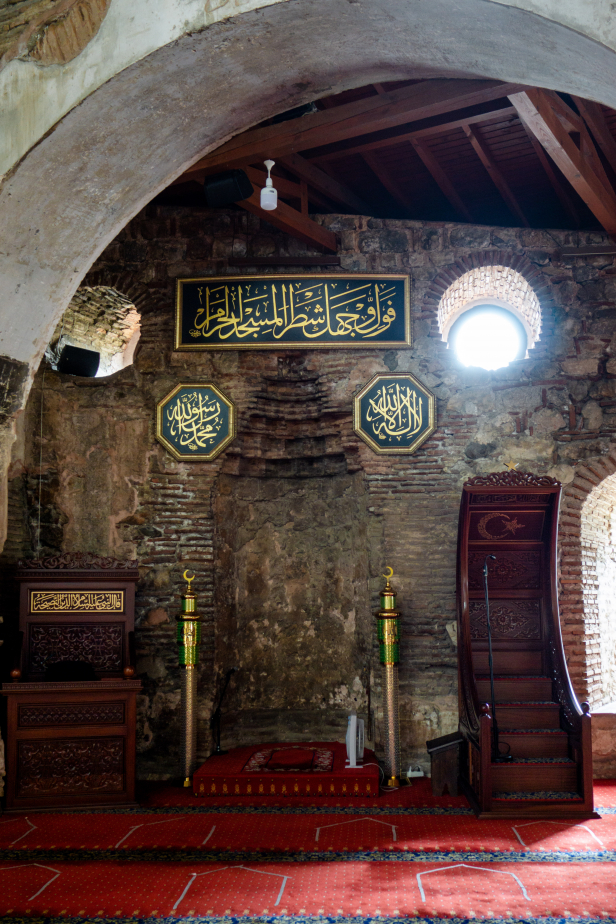
After the Ottoman takeover of the city, the building was converted into a mosque and renamed for Sultan Orhan Gazi. Rather unusual, the mihrab (niche denoting direction of Mecca) is made of brickwork and set in the corner of the right wing of the structure. There are still a few spots where Byzantine Frescoes can be spotted. Near the entrance you can see some of the Byzantine floor mosaics as well.
İznik Museum – 10TL
The museum is housed in a beautifully restored 14th century imaret, or soup kitchens, built to honour Nilufer Hatun. Nilufer Hatun was a Byzantine princess who was given in marriage to Sultan Orhan to maintain good relations between the Byzantines and Ottomans. It didnt work out for the Byzantines who lost a great deal of territory to the Ottomans at this time.Nilufer Hatun, for her part, would go on to have an emminent place in the Ottoman court.
The museum collection is, unfortunately, quite small considering the richness of İznik’s history. There is a collection of historic ceramics and a number of reproductions though little else. The pre-Ottoman history is conspicuously absent. Speaking to locals revealed that there had been displays of roman era chamber tombs and Byzantine era finds, but these had been removed. Perhaps these will come back in time.
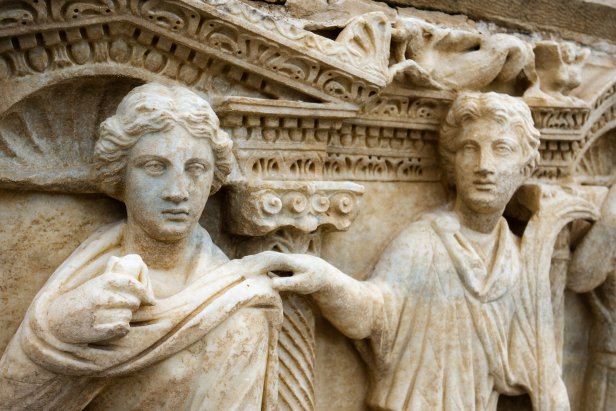
In the garden surrounding the museum there is a collection of Roman style sarcophagi as well as some Ottoman era tombstones.
Green Mosque
Across from the museum is İznik’s finest example of Ottoman craftsmanship (Apart from the ceramics of course). The Green Mosque of İznik (not to be confused with the one in nearby Bursa) was built in the later years of 14th century with beautiful marble work on the building itself and a fine combination of green glazed tiles and red brick on the minaret.
Roman Theatre Ruins
Built in 112 AD, little of the Roman theatre of ancient Nicaea has survived. Many great marble blocks were taken from the theatre to be used in the repair of the walls and other building projects around the city. The theatre was used as a cemetary and then a kiln during its history. Currently Archaeologists are working to repair as much of the structure as is possible.
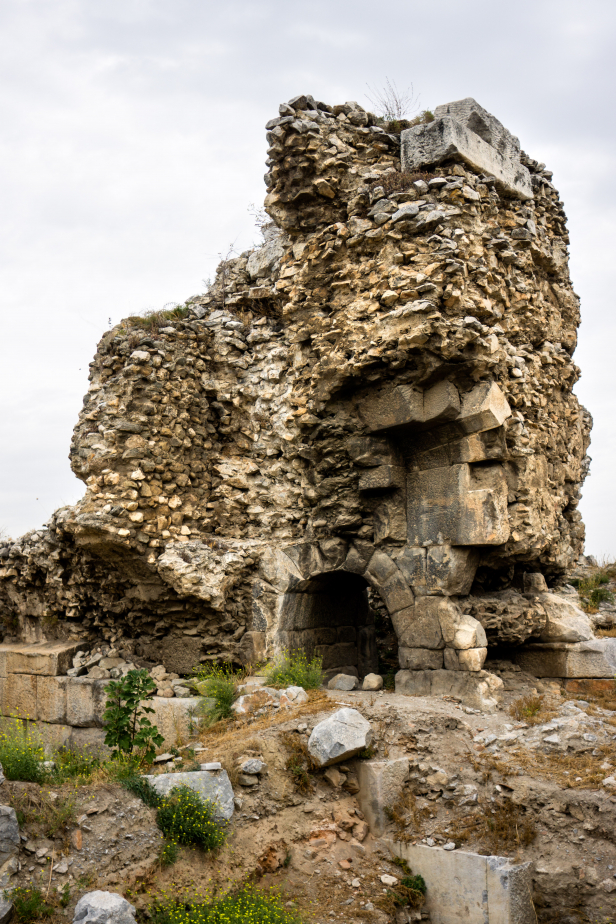
İznik Lake
With only İznik, Orhangazi, and a handfull of villages along its 80 kilometers of shoreline, there is no shortage of quiet spots to have a picnic on the beach and look over the water with the long hills of olive groves behind you. In İznik itself and dotted around the lake you’ll find the occasional restaurant serving typical Turkish dishes and grilled fish.
Turkish Baths of İznik
This once being a proud Ottoman city, you can still find historic bath houses with their soaring domes peaking out between the modern houses. While we haven’t done a proper review, we did step inside the II Murat Hamamı and it looked like a good, clean, historic (15th century), bath house. Walking along the shore at İznik you may even be able to spot the remains of a Byzantine church just below the water.
Church of the Koimesis
Little more remains than the foundations of this once important church where emperors and patriarchs in exile held service and were buried. This building continued on as a church after the Ottoman conquest and was used by the local greeks that remained. The church was destroyed in 1922 during the Turkish War of Independence. Photographs from before its destruction show stunning mosaics covering the ceilings. There is a small baptistry, now a small covered spring, still standing just across the street from the church ruins.
Outside İznik:
There is a handful of sights outside of İznik that are worth visiting. North of İznik you can find the rather unusual Beştaş (Five-Stone) Obelisk. The obelisk was a marker along the old Nicaea – Nikomedia road (İznik – İzmit). The Obelisk is triangular and set atop a tall square plinth of marble.
The Barbarian Rock (Berberkaya) is the remains of the monumental sarcophagus built for King Prousias II of Bithinia in 149 AD.
How To Get There
Public Transit
There is regular bus service to İznik from the Bursa Bus Terminal (Otogar). These are mini-busses, not the large coach busses that run between cities. Payment is taken on the bus itself.
Car
From Bursa take the D200 highway east out of the city towards Yenişehir (you will need to take a left turn towards the north onto the D160 to get to Yenişehir). At Yenişehir follow the D595 north to İznik, from Yenişehir signage will be clear.
For more about car rental and driving in Turkey make sure to read our full drivers guide.
Where To Stay
There are a handful of hotels to choose from in İznik. The cheaper backpacker style hotels can be found in the centre of town and there are a couple of slightly nicer options on the lake side with patio restaurants.
While we would recommend taking a full day to explore İznik, it is possible to see the bulk of the town arriving in the morning and leaving in the evening which would make it possible to stay in places like Cumalıkızık or The City of Bursa.
Other Tips
Planning on visiting İznik? Make sure to check out The City of Bursa and the many other fantastic sights the region has to offer and don’t forget to subscribe to The Art of Wayfaring
Have any tips or info to add? Spot any mistakes? We’d love to hear about it.


